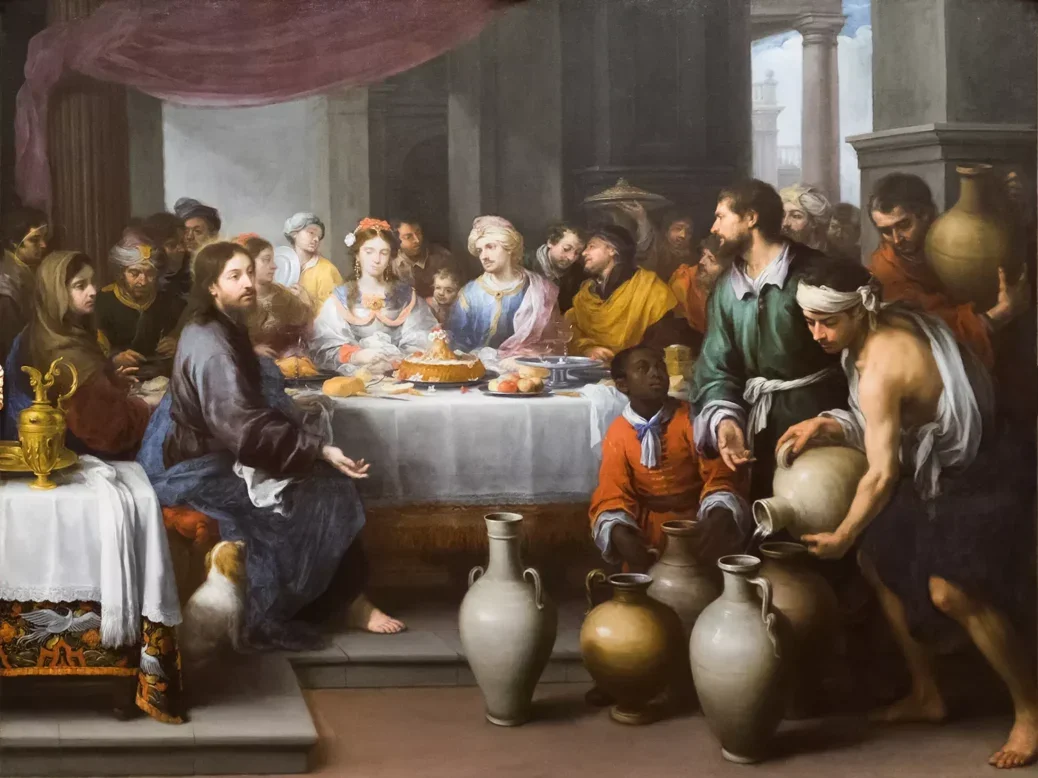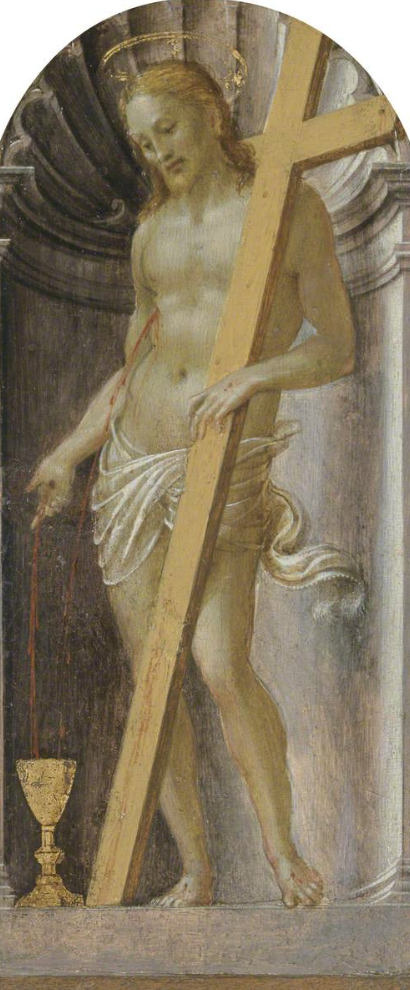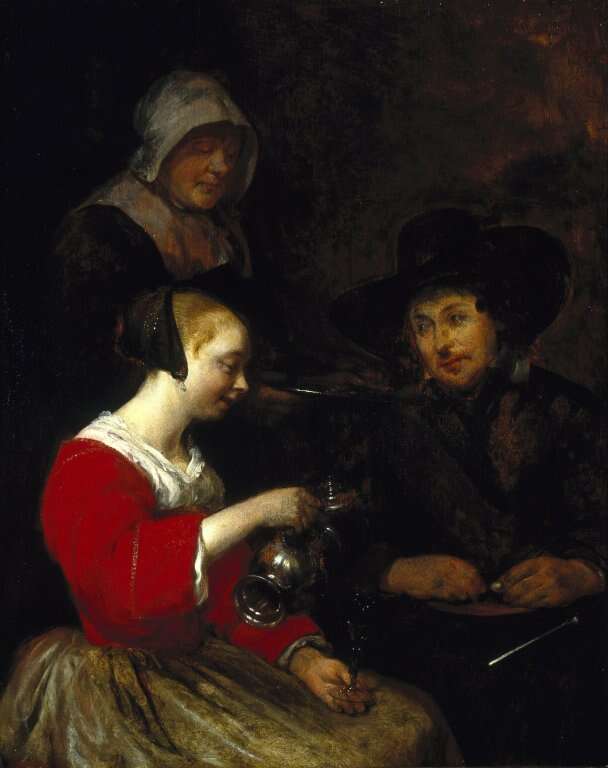
Stuart Walton traces the history of wine in art from Ancient Greek drinking cups to the Dutch masters.
Representations of wine in the visual arts throughout history trace the manifold symbolic meanings it has held within the societies that produced them. While these meanings may be superimposed on one another across time and between cultures, they fall into four broad categories: the ecstatic, the devotional, the aesthetic, and the amorous.
In classical antiquity, wine was an indispensable element of both social togetherness and ritualistic observance. It lubricated the male institution of the symposium, where philosophical disputation took place in a context of (at least initially) measured drunkenness and sexual licence, and it played a sacramental role in the Dionysian rituals that honored the god who brought intoxication to humanity.
Wine in art: Scenes of Greek drunkenness
Scenes of drunkenness are widely depicted on Greek pottery, the drinking cup itself adorned with images of inebriation, lest anybody forget what the gift of wine bestowed. The game of kottabos, in which the symposiast flicked the remaining dregs of a drained cup at a chosen target, while uttering the name of his lover, is depicted in a red-figure Attic kylix of c500BC in the Metropolitan Museum of Art, New York. A laurel-crowned, slightly dishevelled young man dexterously twirls a large shallow cup in his right hand, while his left holds his next cup in an elegant grip on the stem.
What appeared to later ages as mere debauchery was imbued for the Greeks and Romans with a more dignified dual function. Drunkenness was socially pleasurable in itself, but it was also an important ecstatic condition celebrated as the divine path to emancipation from care.
With the coming of Christianity, the iconography of wine underwent a major semantic shift. While it is still a blessing from the divine, an element of the social fellowship by which adepts should strengthen the bonds of faith among themselves, it assumes a higher sacred significance as the blood of Christ. In Murillo’s Marriage Feast at Cana of 1672 (above), at the Barber Institute in Birmingham, it is ethereally present in the pure water being poured into amphorae in the foreground, in readiness for its transformation. Nobody seated at the laden table looks especially convinced that this is going to happen—it was the miracle-worker’s debut, after all—but the presence of a Black African serving-boy, whose soul will presumably undergo an analogous conversion to that of the water, suggests that faith will be repaid.
Those who had not quite grasped the reality of the weekly miracle of the Transubstantiation might contemplate images such as Francesco Granacci’s 16th-century altar panel of Christ the Redeemer, in the National Museum of Wales, in which the blood-jet spurting from the side and the right palm of the resurrected Christ, who now totes the cross to which he was once nailed, flow in nourishing twin streams into the ecclesiastical chalice at his feet.

Secular depictions of wine in art
Even in the secular context, wine is never just wine, but is also a marker of cultivation, civil comfort, and elite taste. Its presence in still-life paintings of the Dutch seventeenth century indicates its privileged role in a northern climate where its very foreignness spoke to the collector’s own discernment. Abraham van Beyeren’s Still Life (c1645-55), in the Hill of Tarvit collection at Fife, shows two römers (thick-stemmed decorative glasses) of wine in the refined company of a lobster, oysters, citrus fruits, and a half-demolished pomegranate. The shorter glass contains a delicate pink wine, something like a Bordelais clairet, while the gleaming white wine in the taller glass has had a half-peeled lemon infused in it, its pared skin and sliced top dangling suggestively towards the rosé, as though extending an invitation to dance.
As an instrument of seduction, widely deployed on—but not limited to—Valentine’s Day, wine is a more propitious commodity than plain old beer. The connoisseurial aura that surrounds it elevates it to another level of erotic temptation. The hopeful wooer in Gabriël Metsu’s Interior with a Lady at a Spinet (c1667), in the Wernher Collection in London, has surprised his intended at her musical labors with a delicately proffered glass of wine, held by its foot to indicate the gentleness of his demeanor. Her spaniel, poised in scrutiny of the suitor at lower left, has perhaps noticed the slovenly tumbled stockings of this Leiden Lothario, a sure sign that not all is as seemly as it seems.
Gender roles are reversed in a Dutch scene that is more obviously about seduction as brute commerce, in Gerard ter Borch’s late 17th-century Woman Pouring Wine at the Walker Gallery, Liverpool. The title, innocuous enough, disavows the transaction taking place between a sex worker and her client. While the elderly procuress stands like a waiter ready to collect payment of the bill, the client has no eyes for the wine being poured from a lidded jug into a flute glass, but only for the scarlet-bodiced pourer. Nonetheless, the wine itself, an all but invisible stream, will play its ethereal part in the fleshly communion to come.

Gerard ter Borch’s late 17th-century Woman Pouring Wine at the Walker Gallery, Liverpool. Photography courtesy of Wikipedia Creative Commons.






